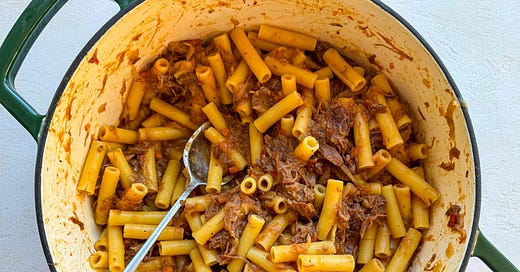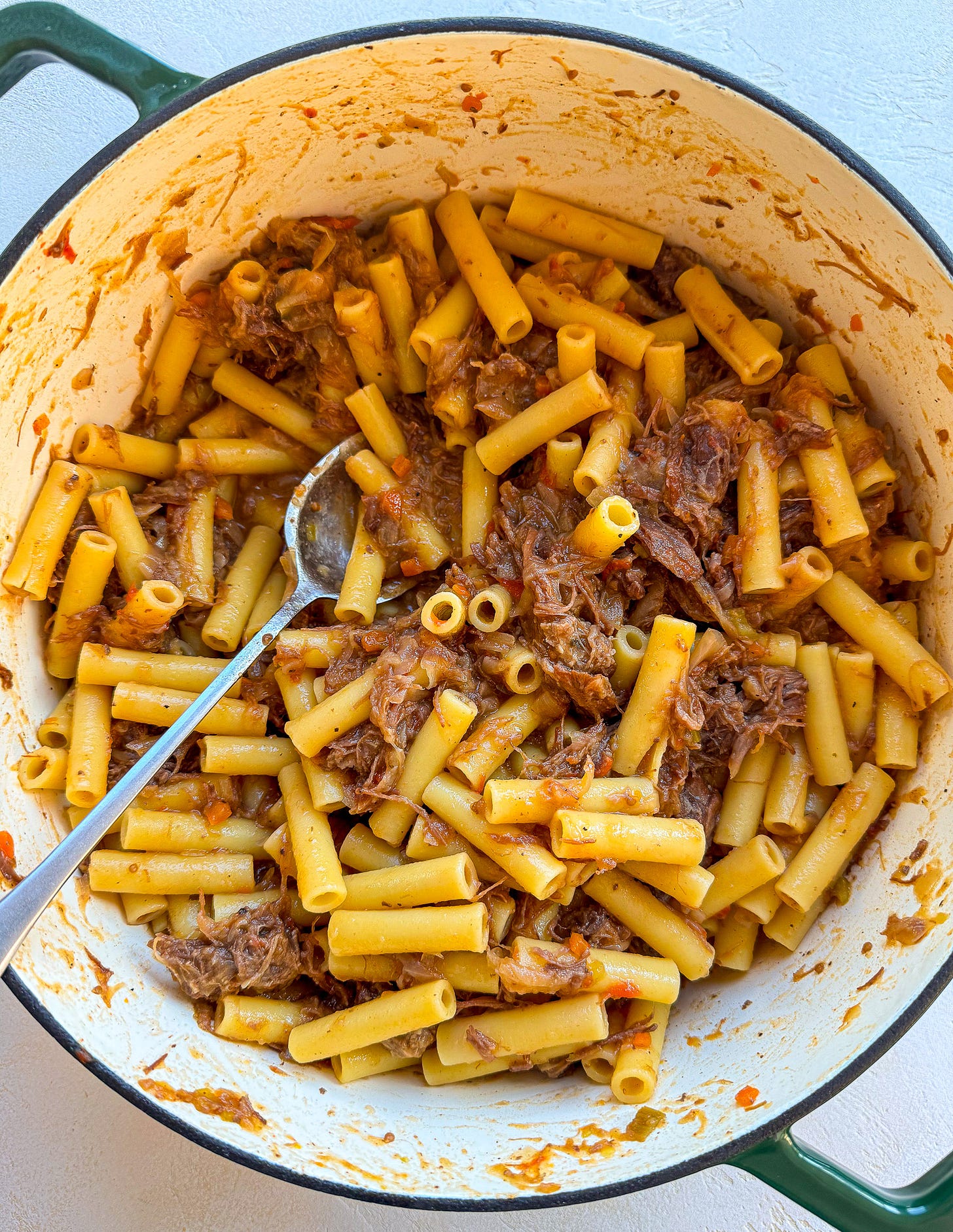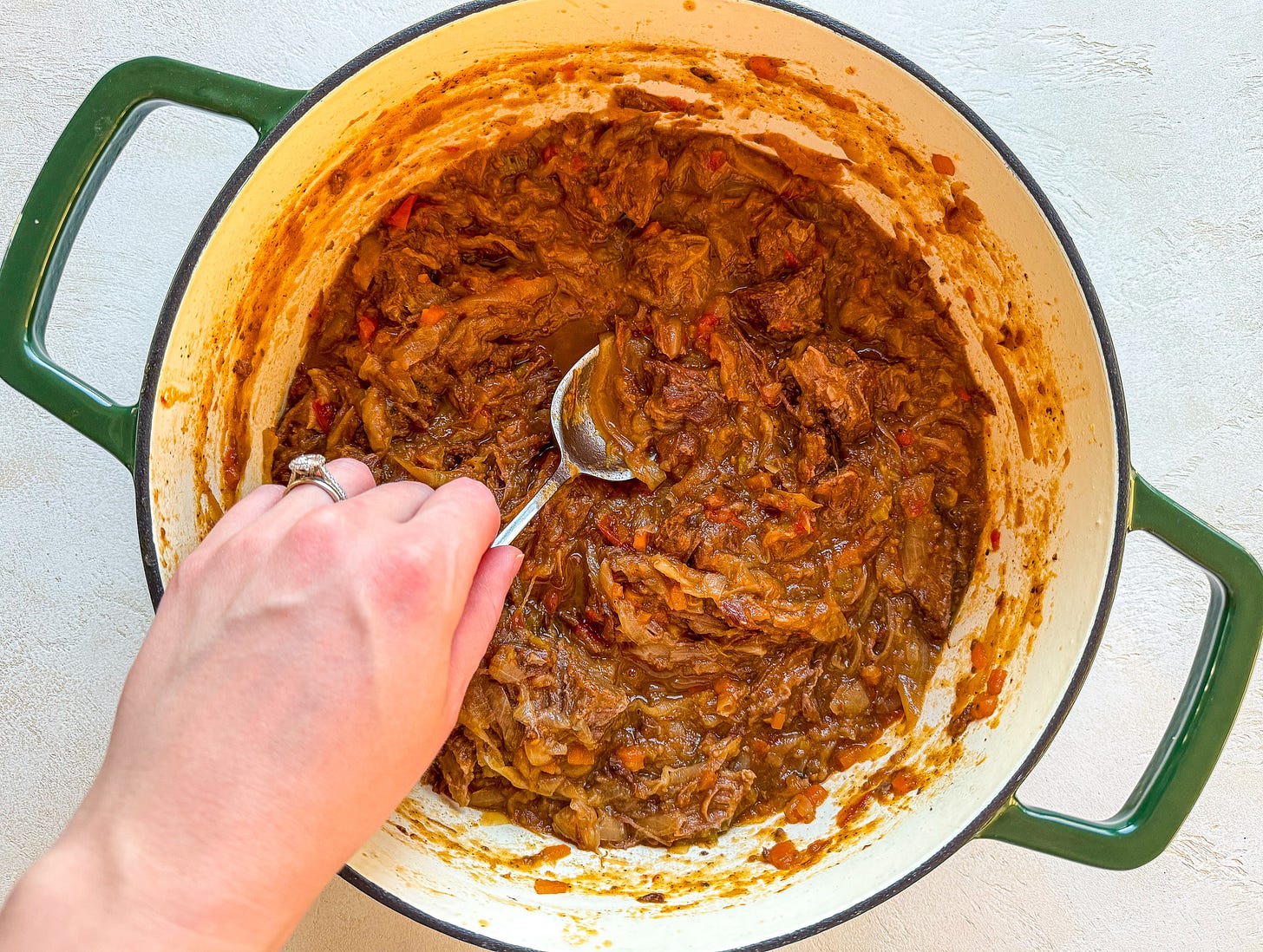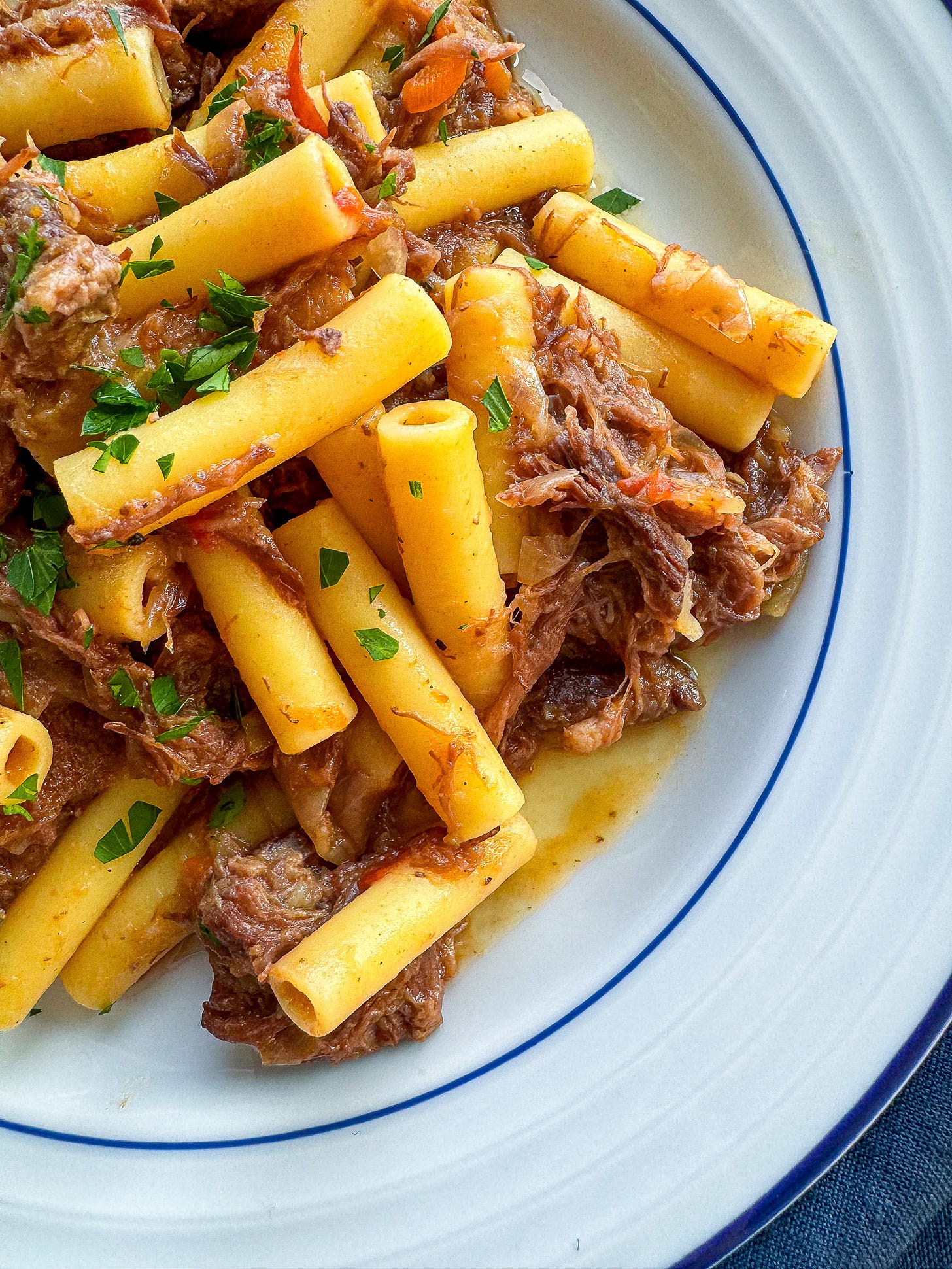Happy holidays, everyone! We’re nearing the end of the advent calendar, and in this season of more, I’m here with a little reminder that great things can also come from less. A few, relatively inexpensive ingredients are all you need to make today’s delicious and impressive ragù, one that looks—and tastes—like far more than the sum of its parts. It’s called la Genovese.
Contrary to its name, la Genovese ragù does not actually hail from Genoa. Instead, you’ll have to travel south, to Naples, where it’s been beloved Sunday lunch and holiday fare for over 600 years. Like many traditional Italian dishes, it was created with resourcefulness in mind, originally designed as a two-for-one meal: The beef, which had been slowly cooked with aromatics, was enjoyed as a main course, and the leftover gravy was tossed separately with pasta or, occasionally, served over polenta. As meat became more affordable and ingrained into everyday diets, the beef was reintroduced into its gravy and the recipe evolved into the cohesive ragù that we see today. As for the name, some claim it came from a particular Neapolitan chef nicknamed “the Genovese” or, more likely, it was developed by meat-loving Genoese cooks who lived in Naples under Spanish rule during the 15th century.
Generally, when it comes to ragù, it’s all about the meat. But what I found most intriguing about this dish is that it’s actually about the onions. Yes, the meat is important—you’re looking for tough cuts of beef, usually chuck, that break down nicely over time—but it’s the humble onion that gives the sauce its signature flavor. I’m not talking about a typical meat sauce’s singular onion that’s so finely chopped it’s practically invisible. I’m not even talking about two or three or four onions. I’m talking about a two-to-one ratio of onions to meat. That’s lots and lots and lots of onions.
What makes this such a genius recipe is that this plethora of onions is used not only for taste, but also technique, imbuing the sauce with unique sweetness, while simultaneously releasing enough moisture in which to braise the beef. In simpler terms, as the onions cook down alongside the meat, they produce a ton of liquid that becomes the actual sauce (no stock required!), and ultimately melt into a sort of luscious cream that coats the pasta. The type of onion you use is up to you; traditionally, la Genovese is made with the sweet and aromatic cipolla ramata di Montoro, native to Campania with a coppery exterior and purply interior. I opted for a mix of standard yellow and red onions, both to mimic the Montoro and impart slightly different layers of flavor.
From a quick glance, you’ve probably noticed that this ragù looks a little different than your average meat sauce. Indeed, it bears no resemblance to Bologna’s superstar up north: No butter, no ground meat or chicken livers, no stock, no milk, no Parmigiano-Reggiano, no…tomatoes. Yup, this is widely considered a ragù bianco, or “white ragù,” in which the meat and aromatics take center stage, resulting in, I think, equally delicious and more subtle flavors. Of course, like all Italian fare, the presence of tomatoes—or lack thereof—doesn’t come without debate: Some recipes do, in fact, include a smidge of tomato paste or a handful of fresh cherry tomatoes. I reached for the latter, which are more common than the former, and found their acidity to be a critical offset to the sweetness of the onions. For a more savory note, feel free to add a tablespoon or two of tomato paste to the pot as well.
Finally, being from Naples, this ragù is best enjoyed with the area’s pride and joy: dried pasta. Narrow, long tubes of ziti or zitoni are typical, but other similar pastas like rigatoni will do just fine. I encourage you to keep it simple and low-maintenance—no need to whip out your pasta machine—but should you want to add a level of luxury, I can’t imagine anyone being disappointed if this showed up on their plate smothering wide, tender ribbons of pappardelle.
This is my final recipe of 2024. And although la Genovese was often reserved for end-of-year holidays like Christmas, I thought it was equally fitting to share it in advance of Hanukkah, which, in a very rare turn of events, starts on Christmas Day. Not only does this dish fall comfortably within kosher dietary parameters, but cheap, tough cuts of beef and onions are both mainstays of Jewish cooking. Most of all, though, the idea of creating something exceptional with very little is particularly aligned with the spirit of Hanukkah, a festival celebrating one night’s worth of oil miraculously lasting eight days during the rededication of the Second Temple in Jerusalem. But whatever the holiday (or any day, for that matter), I know the celebration will be made all the better with a big pot of rich, satisfying pasta alla Genovese.
Before I go, here are ten other recipes from the archives that might also make a welcome addition to your holiday table:
I’ll be back in a couple of weeks with a new Pasta of the Month. Until then, wishing you all a very happy and healthy New Year!
—Meryl
Ziti with Braised Beef & Onion Ragù (Ziti alla Genovese)
Serves 6







